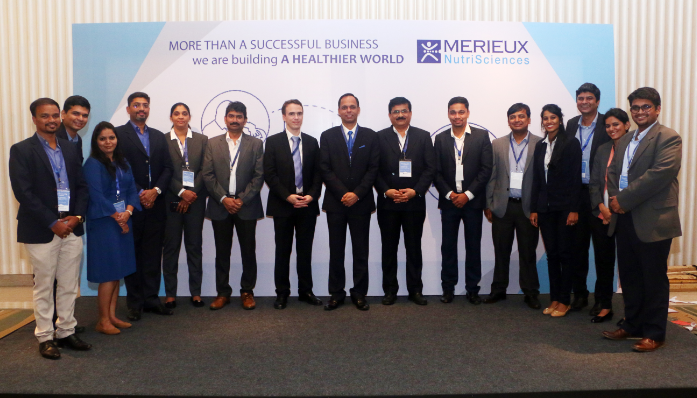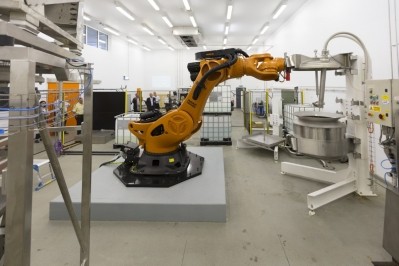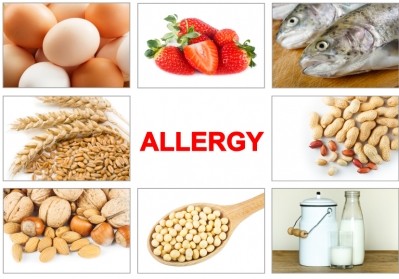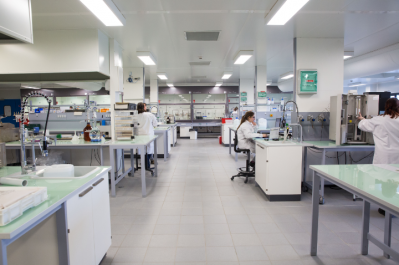Improving traceability in supply chain key concern for customers - Mérieux NutriSciences

Philippe Sans said globalisation of the food supply chain, the multitude of issues and continuous progress of science are important challenges that industry needs to keep up with.
He spoke to us after Mérieux NutriSciences launched the second edition of its Blue Paper in India.
The Blue Paper costs €189 and aims to help customers better understand food-related health issues and have an enhanced vision of future food safety challenges.
It relies on official sources, including documents and opinions from national and international authorities.
Find out more
Second edition of print or online version of Blue Paper on ‘European Food Safety trends, Key issues & Perspectives’
Mérieux NutriSciences said food companies do not always have the internal skills and resources to manage all aspects of food safety and consumer health.
“Moreover food crisis actuality is pushing all of us into a mode of rapid and targeted action planning. But having a mid- and long term vision of emerging issues is critical to determine the proper strategies and control measures along the food chain,” said Sans.
Second edition
The company said with a data update from the previous edition and new focus on contaminants and food matrices it is a reference book for any quality manager at a food operator.
Among new topics are antibiotic resistance, nanoparticles, endocrine disruptors, mycotoxins and plant toxins, foodborne viruses and Salmonella.
It presents figures on selected contaminants and targeted products resulting from analysis by Mérieux NutriSciences of food alerts and recent scientific reviews.
Sans said the first edition received positive feedback from small and large companies as well as the scientific community.
“Whereas nothing has been removed from the first edition, data and numbers have been updated and new topics added. For that, we took the time to discuss with our internal network of experts as well as many food safety stakeholders to collect opinions and expectations.”
New topics such as nanoparticles and endocrine disruptors
Sans said nanoparticles and endocrine disruptors are ‘transverse’ issues with plenty of substances and applications.
“While the first one – nanoparticles - are defined by physical characteristics and the second one - endocrine disruptors - by functional properties (impact on hormonal system), a lot of confusion and uncertainty remains about these topics,” he said.
“For nanoparticles, their effect on the human body, in particular how they are metabolized and if they end up in cells, are unknown. Moreover, two official definitions exist in EU regulations, which increases the possible confusion and uncertainty. Many companies are now facing this issue, trying to understand if their products contain nanomaterials even if not intentionally used.
“Concerning endocrine disruptors, identification criteria are under discussion. Pesticides, biocides and food contact materials substances are pointed out. 1,410 molecules could be potentially endocrine disruptors.
“For both topics, we are at early stage with some on-going public consultations. For sure, restrictions and specific requirements will happen in the future.”
From notices in the Rapid Alert System for Food and Feed (RASFF) system, there is an increasing trend in the number of food notifications (+17% in 2017 vs. 2016), especially those associated with a high safety risk.
“As part of our Blue Paper, we did a deep analysis of the 3,406 notifications reported in 2017 and it came out that notifications due to pathogenic microorganisms increased by 66% vs. 2016. Similarly, pesticides residues, heavy metals, allergens, food frauds and novel food are associated with a significantly higher number of cases reported,” said Sans.
“In particular, undeclared allergens is reason number one for product recalls in Europe, clearly before pathogens. Besides, complex issues such as antibiotic resistance, endocrine disruptors, food contact materials and nanomaterials are raising more and more concerns.”
WGS in South African Listeria outbreak
Sans said it is not uncommon for food safety issues to spread from one region to another as food travels across the world.
“We have seen many incidents in past such as melamine issue originating from Asia but impacting the food supply chain across the world. Hence, the preparedness level against such risk needs to be high in all regions. The European Union also imports a lot of food products from Asia including India.”
Emerging technologies can play a key role by speeding up identification of new hazards and/or getting a comprehensive understanding of them, said Sans.
“For instance, our Whole Genome Sequencing (WGS) solution…recently proved its efficiency in the South Africa Listeria crisis which caused more than 200 deaths.
“By providing a deep characterization of bacterial strains in a very short period of time, Mérieux NutriSciences WGS solution allowed several food companies to be discharged of any responsibility in the contamination. The cutting edge technology coupled with scientific expertise and specific bioinformatic skills were key in this process.”
New and emerging challenges
The company has digital tools to tackle quality and safety challenges like environmental monitoring automation (EnviroMap) and supplier monitoring real time dashboards (QualMap).
It also works with customers, start-ups and partners to find ways to help increase transparency and reduce risk thanks to the blockchain.
Beyond emerging pathogens and contaminants, new challenges may come from climatic changes.
“In particular, new mycotoxins and plant toxins (e.g. marine toxins) may appear. How to predict it? In which food products? This is not an easy task,” said Sans.
“Other challenges coming from new bio-based materials (e.g. sustainable re-use of byproducts and waste from agrifood), new food sources (novel foods such as insects) and new diets (e.g. vegan) may raise new food safety issues. And the race between fraudsters and labs working on the prevention and detection of food frauds like ours, will continue.”



















